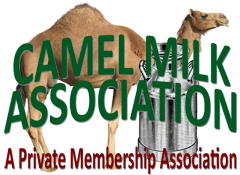Concept of Liberty
The Concept Of Liberty
The concept of “liberty” as guaranteed by the due process clause of the Fifth and Fourteenth Amendments of the U.S. Constitution has been held to denote by the U.S. Supreme Court and others, the following: 1. Freedom from bodily restraint. 2. Right of the individual to contract. 3. Right to engage in any of the common occupations of life. 4. Right to acquire useful knowledge. 5. Right to marry. 6. Right to establish a home. 7. Right to bring up children. 8. Right to worship God according to the dictates of his own conscience. 9. Right to enjoy those privileges long recognized at common-law as being essential to the orderly pursuit of happiness by free men. 10. Right of freedom of association. These “liberty” rights were upheld in the cases of Meyers v. Nebraska, 262 U.S. 390; Board of Regents v. Roth, 408 U.S. 390; Flesher v. City of Signal Hill, 829 F.2d 1491; Estate of Marissa Renee Imrie v. Golden Gate Bridge, Highway and Transportation District, 282 F.Supp. 2d 1145 and many others. Thus, the Right of Freedom of Association can be equated with nine (9) other rights under the legal concept of “liberty” that would not be even questioned by you to exercise in your life. The question becomes, “Why do you hesitate to exercise your freedom of association as part of your “liberty” interest”? The answer is that you have been influenced by persons who do not put your liberty interest above their interest and would misrepresent the true law concerning the “liberty” of freedom of association. Also, this “liberty” being freedom of association, may not be interfered with under the guise of protecting the public interests, arbitrarily interfere with private business, or impose unusual and unnecessary restrictions upon lawful occupations. Lawton v. Steele, 152 U.S. 133. Again, the Right of Freedom of Association is one (1) of the liberties guaranteed by the Supreme Law of the Land in the United States. (see above) This is why no Federal or State Agency has ever successfully even challenged a properly setup and operating 1 st & 14th Private Membership Association in the history of this country for over two hundred (200) years.
Public Domain versus Private Domain
First, an understanding of the difference between a mala in se crime and a mala prohibita crime is important. A mala in se crime is a “crime or evil in itself,” e.g. murder, rape, bank robbery, etc. even under common-law. A mala prohibita crime is not a “crime in itself” but is only a crime because a state legislature or federal congress makes it a crime for the public welfare. For example, the federal government or a state may decide to license a certain profession that was legal to do before licensing. After the licensing statute, a person who conducts that profession without a license could be charged with a felony criminal offense for practicing without a license. In the public domain, a person who advises another that his legal rights have been infringed and refers him to a particular attorney has committed a mala prohibita felony crime in the State of Virginia. But in the private domain of a First Amendment legal membership association, the state, “…in the domain of these indispensable liberties, whether of…association, the decisions of this Court recognize that abridgment of such rights.” N.A.A.C.P. v. Button, 371 U.S. 415 at 421. The “modes of…association protected by the First and Fourteenth (are modes) which Virginia may not prohibit. N.A.A.C.P. v. Button, at 415. In other words, a private mode or domain is protected and is a different domain than a public domain. What was a mala prohibita felony criminal act in the public domain became a legally protected act in the private domain or private association. A mala in se crime is not legally protected in the private domain or private association. Also, the private domain is referred to as a “sanctuary from unjustified interference by the State” in Pierce v. Society of Sisters, 268 U.S. 510 at 534-535. And as a “constitutional shelter” in Roberts v. United States, 82 L.Ed.2d 462 at 472. And again as a “shield” in Roberts v. United States, supra at 474. In addition, the U.S. Supreme Court in Thomas v. Collins, 323 U.S. 516 at 531, specifically refers to the “Domains set apart…for free assembly.” The First Amendment right to association creates a “preserve” in Baird v. Arizona, 401 U.S. 1. The private domain of an association is a sanctuary, constitutional shelter, shield, and domain set apart and a preserve according to a number of U.S. Supreme Court decisions. A Private Membership Association Copyright © ProAdvocate Group 2011 DISCLAIMER: This information provided by ProAdvocate Group is for educational purposes only. Our trustees, officers and supporting staff of ProAdvocate Group are not licensed members of the State Bar of Texas. Information provided by members of ProAdvocate Group should not be considered a substitute for the advice of a licensed attorney in handling your legal affairs
https://www.camelmilkassociation.org/assets/images/Concept of Liberty Public vs Private Domain.pdf
